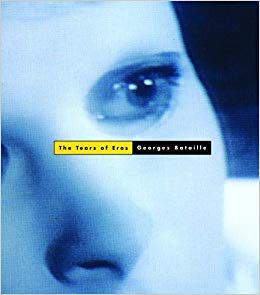 By GEORGES BATAILLE (City Lights; 1961/89)
By GEORGES BATAILLE (City Lights; 1961/89)
This heavily illustrated philosophical primer on the influence of death in the sacred and sexual was the final work of Georges Bataille, and a fitting testament to a man obsessed throughout his life with the link between ecstasy and horror. In this book Bataille argues that the awareness of death, and its unity with eroticism (the term “little death” has important connotations to Bataille), is what truly separates man from animal. He illuminates this thesis via a history of man’s evolution (obviously creationists are advised to steer clear of this book) as represented by the surviving artwork of past eras.
Bataille died before THE TEARS OF EROS saw print, and so missed out on the book being censored by the French government. I’m guessing that’s due to the pictorial content and not the text. Bataille, after all, had already elaborated on the ideas explored in this volume in earlier works like EROTISM, of which THE TEARS OF EROS can be almost be viewed as a more reader-friendly abridgement.
Yet THE TEARS OF EROS’ primary selling point is the amazing pictures, which take up over half the book. Among them are photos of prehistoric etchings, notably one found at the bottom of a cave depicting a bird-headed man with an erection lying beside a large, possibly dead, animal—Bataille, as you might guess, has a field day with the perverse undertones suggested by that picture! We also get reproductions of quite a few extraordinary works of art (all in black and white, alas) that span the centuries, all centered on bizarre and perverse subject matter. Standouts include Thierry Bouts’ “Hell,” Cranach’s “Judith and the Head of Holofernes,” and Jan Gossaert’s arrestingly titled “Metamorphosis of Salmacis into a Hermaphrodite.”
The book’s true piece de resistance, however, is a 1905 photo of a Chinese man being graphically dismembered before a ravening crowd. The photo (also seen in the film MARTYRS, which contains some very Bataille-like concepts) is notable for the incredible anguish it presents, offset by the curiously ecstatic expression on the victim’s face (he had admittedly been given opium). Bataille concludes his book by noting the profound influence the picture had on his thinking: “I never stopped being obsessed by this image of pain, at once ecstatic and intolerable,” divulging for him “the identity of these perfect contraries, divine ecstasy and its opposite, extreme horror.”
